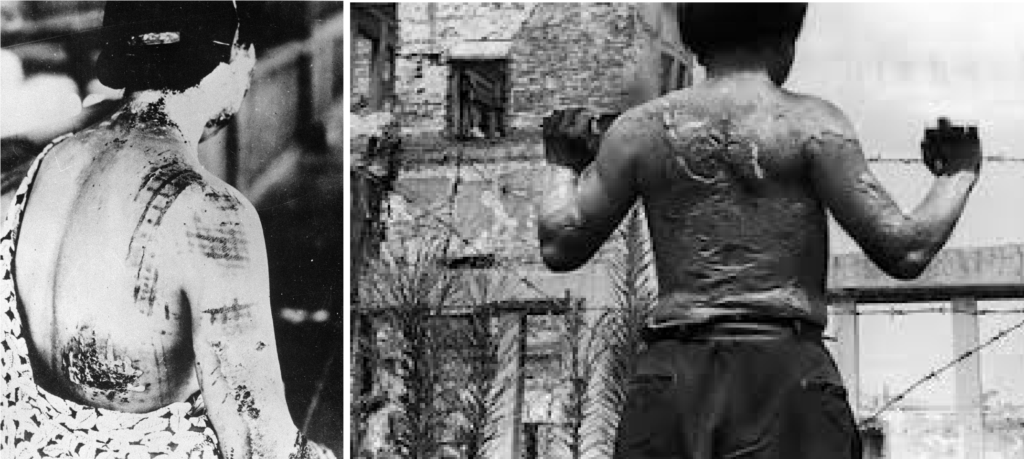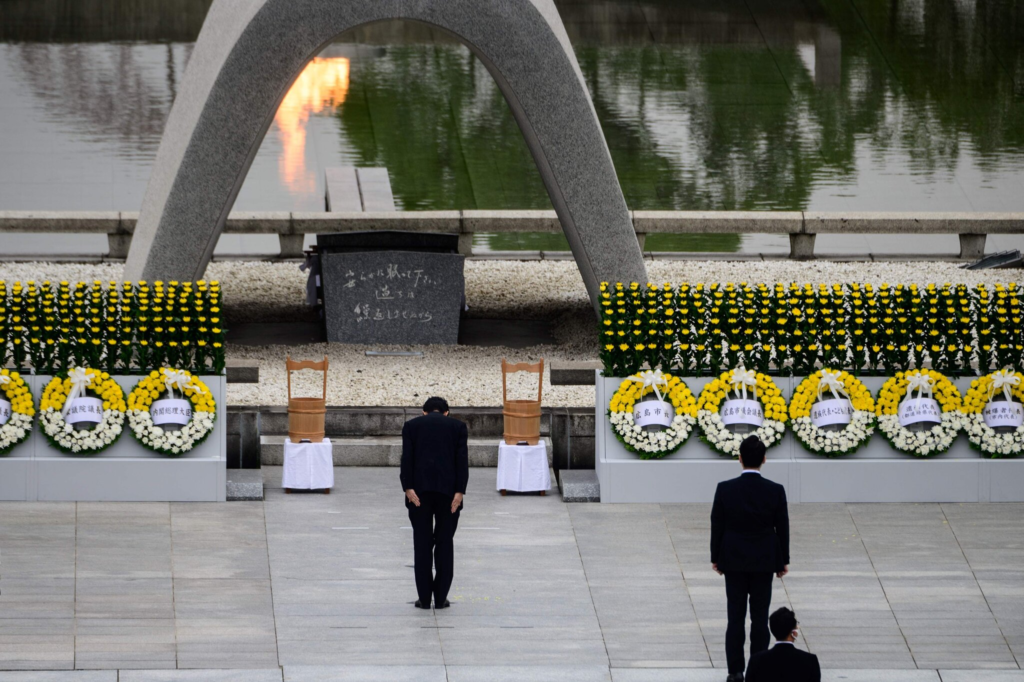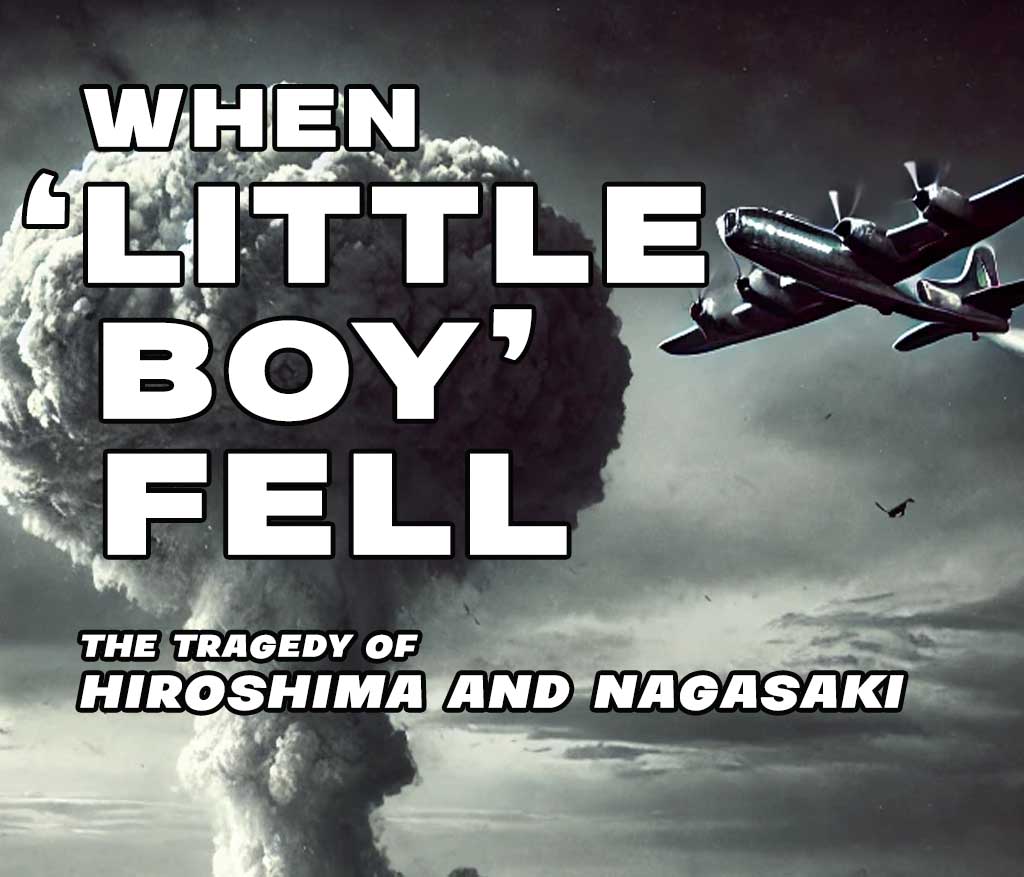On the morning of August 6, 1945, as the sun rose over Hiroshima, Japan, the city was bustling with life. Children were heading to school, workers were starting their day, and the streets were filled with the usual hum of activity. Unbeknownst to them, a B-29 bomber named Enola Gay was approaching from the sky, carrying a weapon that would forever change the course of history.
The Unleashing of “Little Boy”

At precisely 8:15 AM, the Enola Gay released its deadly cargo—a uranium-based atomic bomb ominously nicknamed “Little Boy.” In an instant, a blinding flash illuminated the sky, followed by a deafening explosion. The heart of Hiroshima was engulfed in a massive fireball, reaching temperatures of several million degrees Celsius. Buildings were obliterated, and a towering mushroom cloud ascended, casting a dark shadow over the city.
Immediate Devastation

Approximately 80,000 people perished instantly, their lives snuffed out in a heartbeat. Tens of thousands more suffered grievous injuries, severe burns, and radiation exposure. The once-vibrant cityscape was reduced to smoldering ruins, and the survivors, known as hibakusha, faced a harrowing new reality.
Summary:
- Date: August 6, 1945
- Time: 8:15 AM
- Bomb: “Little Boy” (uranium-based)
- Immediate Deaths: Approximately 80,000
- Injuries: Tens of thousands with severe burns and radiation exposure
Nagasaki’s Tragic Fate

Just three days later, on August 9, 1945, the city of Nagasaki faced a similar horror. At 11:02 AM, another B-29 bomber released “Fat Man,” a plutonium-based atomic bomb. The explosion unleashed a force that flattened buildings and ignited fires across the city. An estimated 40,000 people died instantly, with the death toll rising to 70,000 by year’s end due to injuries and radiation sickness.
Summary:
- Date: August 9, 1945
- Time: 11:02 AM
- Bomb: “Fat Man” (plutonium-based)
- Immediate Deaths: Approximately 40,000
- Total Deaths by Year’s End: Around 70,000
Lingering Effects and Suffering

The immediate devastation was beyond comprehension, but the lingering effects proved equally insidious. Survivors grappled with acute radiation syndrome, suffering from symptoms like severe burns, hair loss, and hemorrhaging. In the ensuing years, a marked increase in leukemia and other cancers was observed among the hibakusha. Children exposed in utero faced higher risks of birth defects and developmental challenges.
Summary:
- Health Issues: Acute radiation syndrome, increased leukemia and cancer rates
- Impact on Children: Higher risks of birth defects and developmental challenges
Psychological and Social Impact

The psychological scars were profound. Many survivors bore the weight of trauma, mourning lost loved ones and grappling with survivor’s guilt. Social stigmas emerged, as some hibakusha faced discrimination due to fears of radiation-related illnesses. Despite these challenges, they displayed remarkable resilience, rebuilding their lives and communities from the ashes.
Summary:
- Psychological Effects: Trauma, survivor’s guilt
- Social Challenges: Discrimination and stigma
- Resilience: Rebuilding lives and communities
The Path to Surrender
The bombings of Hiroshima and Nagasaki were pivotal in bringing World War II to a close. On August 15, 1945, Japan announced its surrender, leading to the end of the conflict. However, this victory came at an unimaginable human cost, prompting global reflection on the ethics of nuclear warfare.
Summary:
- Surrender Announcement: August 15, 1945
- Global Reflection: Ethical considerations of nuclear warfare
A Legacy of Peace and Advocacy
In the decades since, Hiroshima and Nagasaki have transformed into symbols of peace and resilience. Memorials stand as solemn reminders of the past, and the hibakusha have become vocal advocates for nuclear disarmament, sharing their stories to ensure such tragedies are never repeated.
Summary:
- Memorials: Established in both cities
- Advocacy: Hibakusha promoting nuclear disarmament
Honoring the Memory

Today, as we reflect on these events, we honor the memory of those who perished and pay tribute to the enduring spirit of the survivors. Their experiences serve as a poignant reminder of the devastating consequences of war and the enduring hope for a world free from the shadow of nuclear weapons.
Summary:
- Remembrance: Honoring victims and survivors
- Hope: Aspiration for a nuclear-free world
In the words of a Hiroshima survivor: “We must not forget the past, but we must also look forward, striving for a future where peace prevails, and such horrors are never witnessed again.” Thanks for reading this article hope you guys like it…





